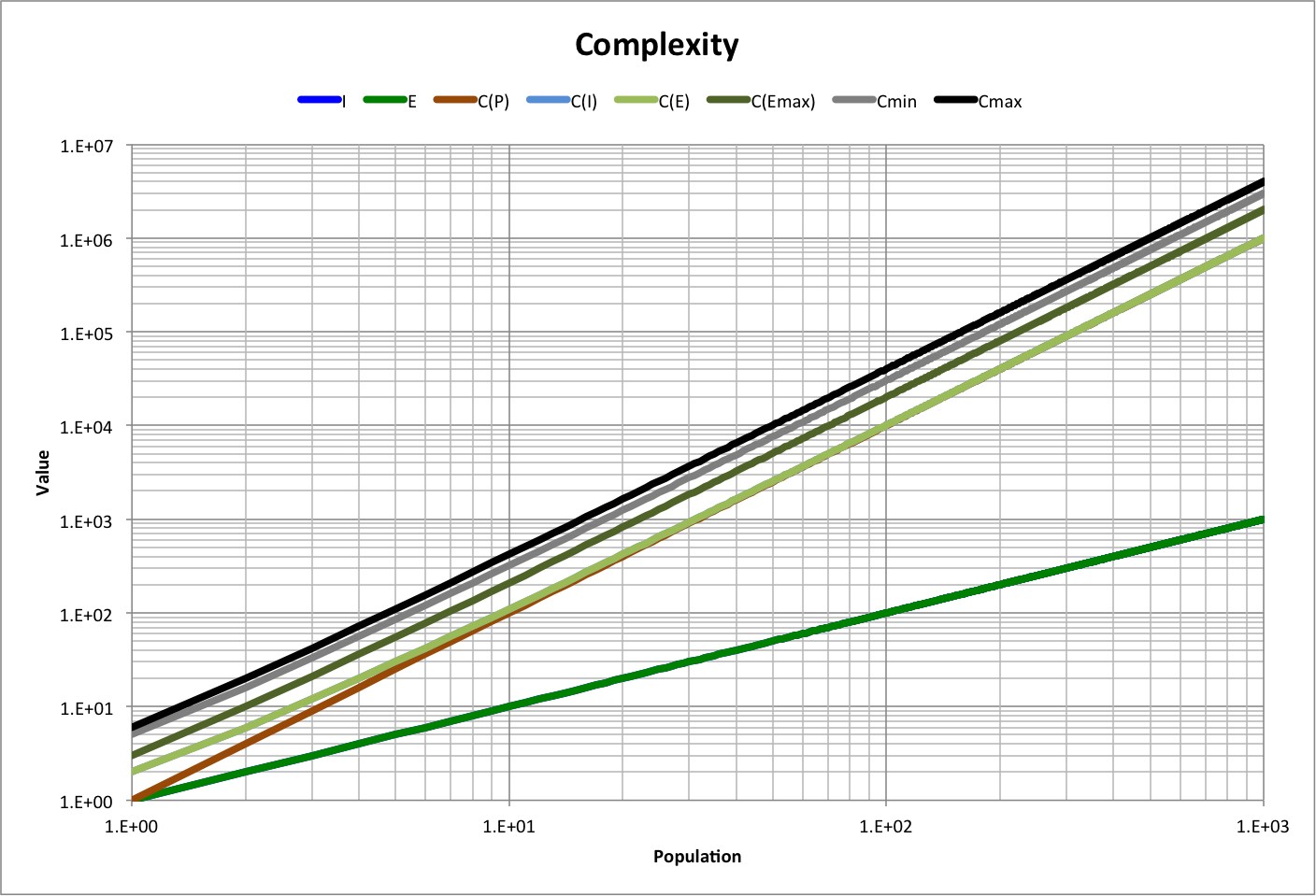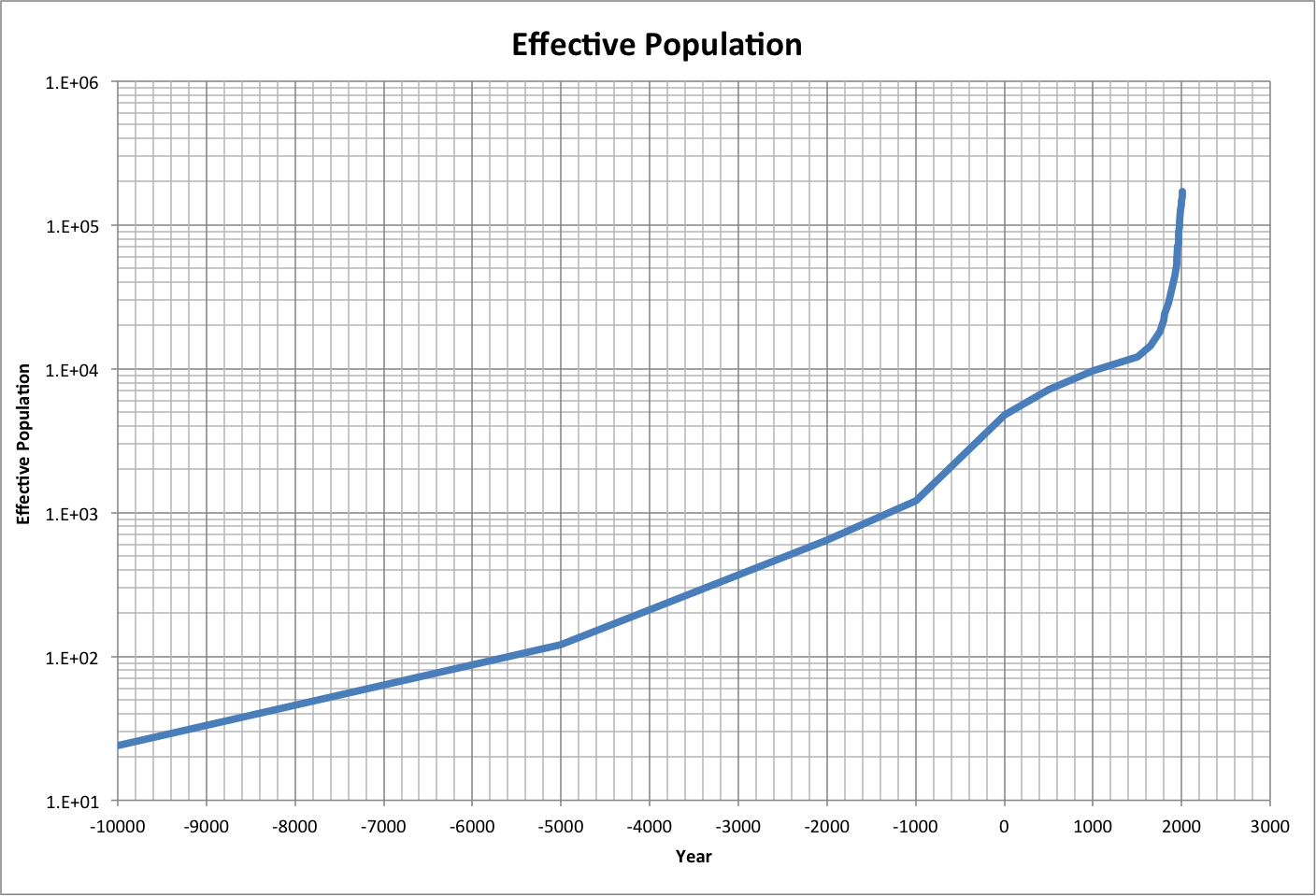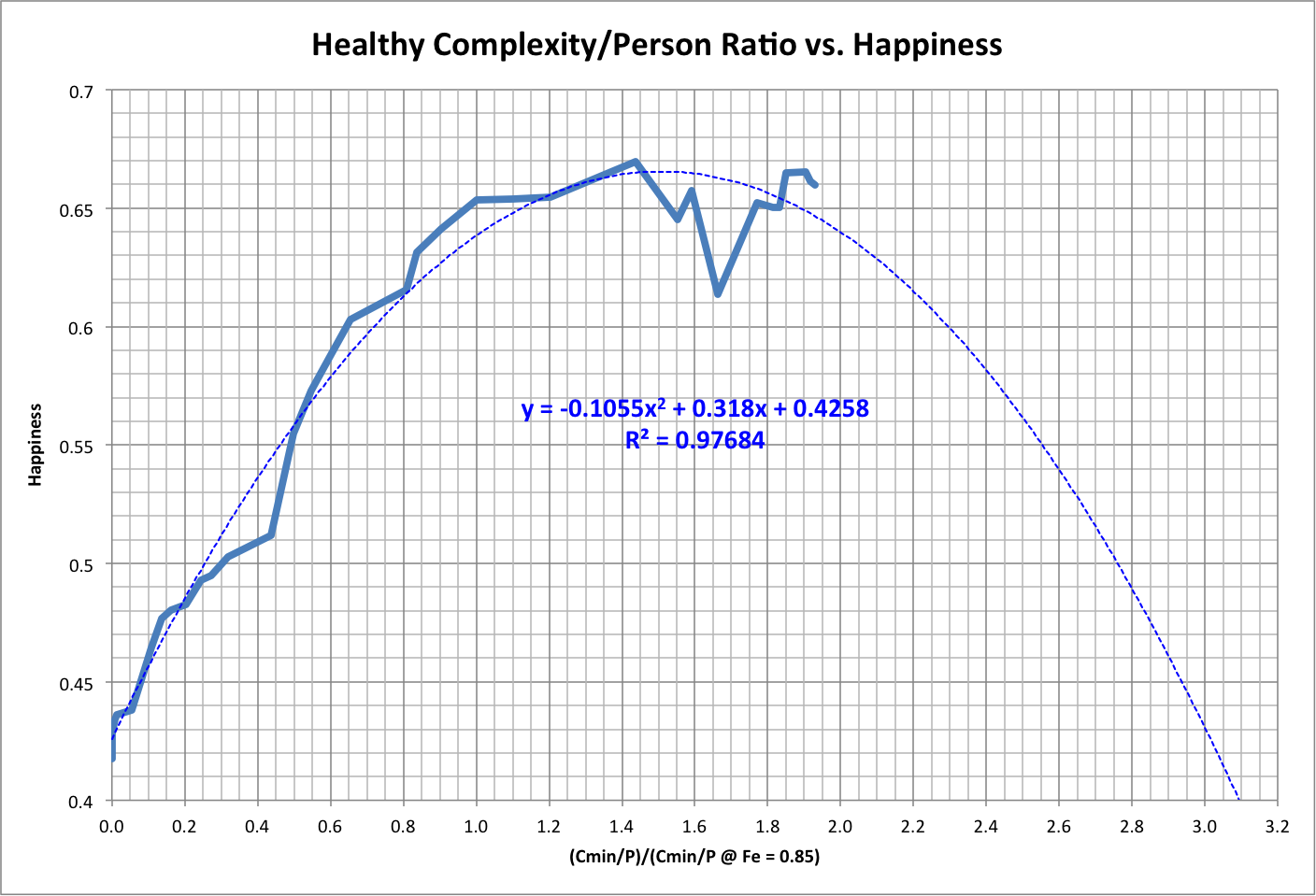Based on the definitions of complexity, the following graph shows how each component varies over population size for the simplifying case where the number of internal constructs (I) and environments (E) equal the population size (P).
Here,
|
|
|
|
|
|
|

Note that I and E overlap because they have identical values, as do C(I) and C(E).
The following graphs and discussions use Cmin for "complexity."
COMPLEXITY AND HAPPINESS
To identify a possible relationship between complexity and happiness, complexity per person is used (Cmin/P) because it corresponds to an individual person's perception of complexity.
For Cmin = 3 * P 2 + 2 * P, Cmin/P = 3 * P + 2. This simplifies to 3 * P for large populations (city-size and greater).
To simplify comparison, the complexity per person is presented as a ratio of its value, in a given year, to its value when the total ecological footprint (Fe) was at its maximum healthy value of 0.85 Earth/year in 1970, which still allowed enough resources for other species to survive and continue maintaining a habitable world.
The following graph uses data from the analysis in version 4 of the Population-Consumption Model (PCM v4) over the years 10000 BC to 2013 AD:

Note that happiness peaks after the ratio equals 1. Roll over the image to see a plot of time corresponding to the data.
According to PCM v4, happiness is related to population size through people's occupation of natural environments, which has peaked due to our consumption of ecological resources. Since complexity per person is determined by population size, its correlation with happiness will be similar.
A simple least-mean-squares curve fit (below) projects happiness as a function of complexity per person, and suggests that the peak actually occurred when the ratio was 50% above the healthy value (between 1990 and 1995). Also, further increases in complexity per person will correlate with less happiness as previewed in the major dip at a ratio of 1.66 in 2000. Roll over the image to see associated years.
COMPLEXITY AND ATTENTION
Practically, we can assume that people only have a very small number of conscious, directed interactions restricted to those people and environments in their immediate vicinity (their "effective population" is about the size of their community), though they may be aware of the impacts of their other interactions (thus leading to the overall effect on happiness).
We can estimate effective population over time by starting with a number representing the smallest community, and multiplying it by the same amount that the world population multiplied. For example, as shown in the following graph, we can start with a community of 24 people and project its growth over time:

To get a sense of the quality of a person's interactions with each of the people, internal constructs, and environments in their vicinity, we can estimate how much time that can be spent with them. Assuming that definition of each component is done during the interactions, the complexity per person equals the number of interactions, and for simplicity we can combine all interactions. That is, we can estimate the time available to be spent with each combination of people, internal constructs, and environments, and the number of combinations equals the size of the effective population.
Specifically, time per combination is equivalent to the attention a person can give to each community member (their interaction will have social, internal processing, and environmental components). If a person sleeps eight hours per day, and interacts with every community member (and related constructs and environments) for the rest of the time over the course of a year, then the attention per community member, in minutes, has fallen from 14,600 (about 2 weeks at 16 hours per day) at the beginning of civilization to about 2 in 2013.

For a discussion of the topics on this page, see the blog post "Complexity, Happiness, and Responsibility."
